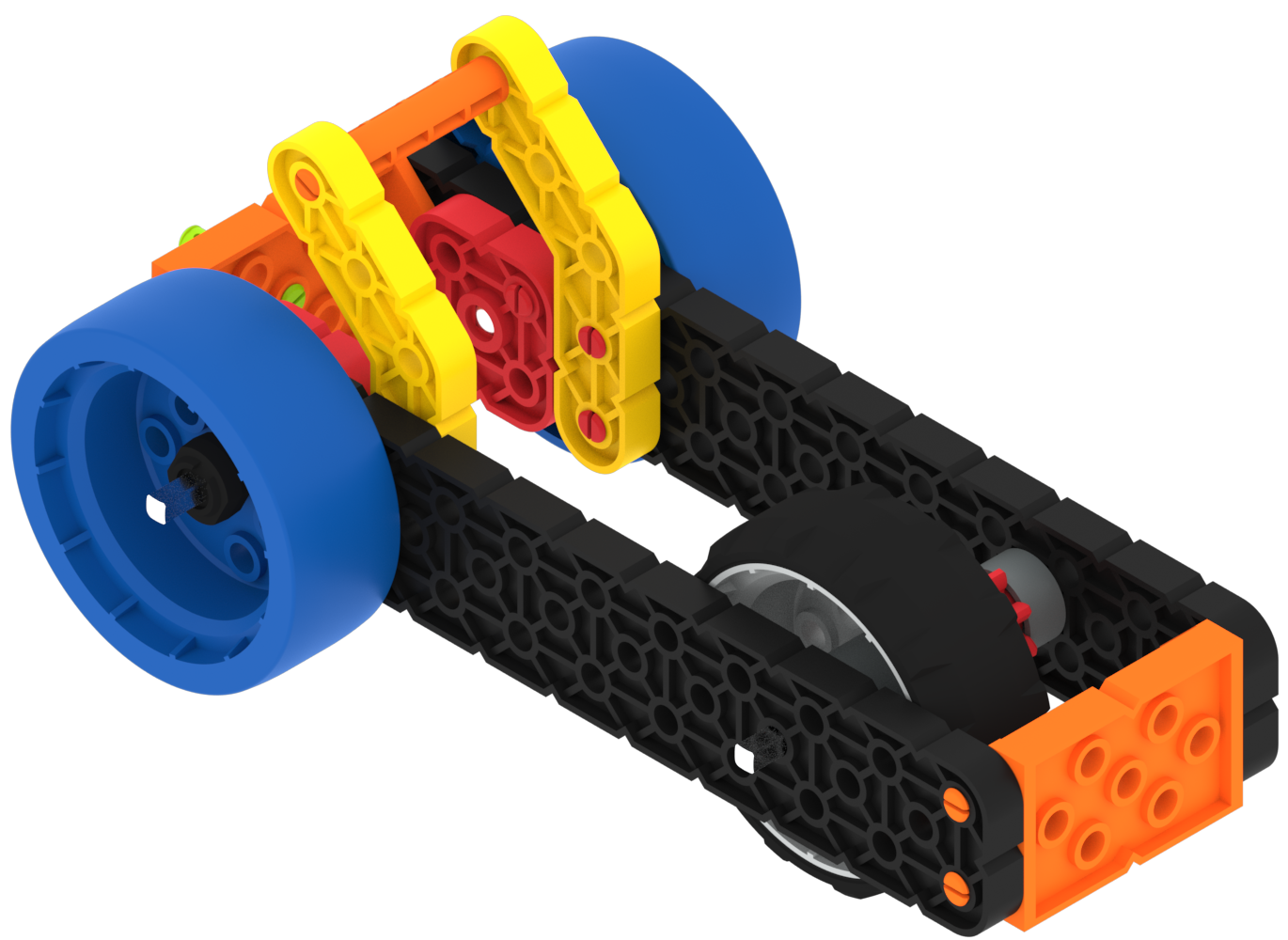Engage
Launch the Engage Section
ACTS is what the teacher will do and ASKS is how the teacher will facilitate.
| ACTS | ASKS |
|---|---|
|
|
Getting the Students Ready to Build
How can forces tell us how far a car is going to travel? We are going to build an Unpowered Super Car to measure and test how far our car travels.
Facilitate the Build
- InstructInstruct students to join their team, and have them complete the Robotics Roles & Routines sheet. Use the Suggested Role Responsibilities slide in the Lab Image Slideshow as a guide for students to complete this sheet.
- DistributeDistribute build instructions to each team. Journalists should gather the materials on the checklist.
-
FacilitateFacilitate
the build process.
- Encourage students to use spatial language while discussing the build. Ask them to explain the position of the wheel, or describe why the wheel is on the inside instead of the outside.
- Ask students to experiment with the pieces if time allows and encourage spatial language: How many small pieces does it take to create the length of the car?
- Refer to the Robotics Roles & Routines handout for group instruction. Builders can begin building. If there are multiple builders, they should alternate steps to complete the build. Journalists should assist with the build, gather materials, and record information on the Data Collection Sheet.

VEX GO Unpowered Super Car - OfferOffer suggestions and note positive team building and problem solving strategies as teams build together.

Teacher Troubleshooting
- If students are having trouble with the pins, offer the Pin Tool as support.
- Encourage students to gather all pieces needed before they begin building.
Facilitation Strategies
- Ask students to refer to their Robotics Roles & Routines in class. What are their responsibilities?
- Remind students about agreed upon strategies for decision making, should questions arise during group work. Things like flipping a coin, taking turns, or rolling a die can help students make decisions in fast and fair ways.
- Use the Get Ready...Get VEX...GO! PDF Book and Teacher’s Guide - If students are new to VEX GO, read the PDF book and use the prompts in the Teacher’s Guide to facilitate an introduction to building and using VEX GO before beginning the Lab activities. Students can join their groups and gather their VEX GO Kits, and follow along with the building activity within the book as you read.
- Use the Teacher’s Guide to facilitate student engagement. To focus on VEX GO connections in a more concrete or tangible way, use the Share, Show, or Find prompts on each page to give students an opportunity to get to know their kits in more depth.
- To focus on the habits of mind that support building and learning with VEX GO, like persistence, patience, and teamwork, use the Think prompts on each page to engage students in conversations about mindset and strategies to support successful group work and creative thinking.
- To learn more about using the PDF book and accompanying Teacher’s Guide as a teaching tool any time you are using VEX GO in your classroom, see this VEX Library article.